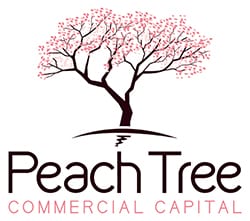A new year means new opportunities for growth. Your business is a living, growing entity which requires a continual influx of capital. This may come from sales, investors, and commercial financing. As not all business owners want to bring investors onboard, and sales fluctuate throughout the year, commercial lending is often used to access cash while still allowing you to run your business on your own terms. Here are six commercial financing vehicles that can help your business grow in 2019.
Asset-Based Loans
Asset-based loans are financed using existing assets as collateral. This differentiates them from other forms of financing which favor business and personal credit scores over collateral as the primary factors for loan qualification. Asset-based loans give borrowers with lower credit scores the ability to receive financing in scenarios where they might otherwise be rejected. There are a variety of options for asset-based financing, including inventory financing, commercial real estate loans, accounts receivable financing, equipment loans, acquisition loans, and hard money loans.
Equipment Financing
Equipment financing helps you obtain the equipment your company needs in order to do business. You get ownership of important equipment and can then pay off the loan with the revenue generated from using the equipment. Equipment can be financed through purchase loans, leasing, sales-leasebacks, refinancing, and hard money loans. Depending on the lender, these financing options may not require additional collateral past the equipment itself. One of the biggest benefits of equipment loans is their speed of approval, which can happen very quickly when compared with some other types of financing.
Factoring (aka A/R Financing)
Factoring is financing based on the invoices your business has sent to your clients. Your accounts receivable are signed over as collateral to the lender. In exchange for providing your business with immediate cash, the lender then collects your future payments directly from your clients.
When considering this type of funding there are a few important things to consider. The age of the receivables will have an impact on the loan, with older accounts receiving less financing due to their age and lower likelihood of repayment. In addition, though less common, some lenders will offer limited or no recourse financing, where the lending company will assume the risk if the accounts are not repaid.
Lines of Credit
A business line of credit provides the flexibility that a regular business loan doesn’t, allowing for easy access to capital on an as-needed basis. Similar to a business credit card, interest is charged only on borrowed funds. You can draw and repay funds as needed, as long as the credit limit isn’t exceeded. The best use of a line of credit is typically smoothing over speed bumps in cash flow by covering everyday business expenses such as employee wages, accounts payable, or seasonal working capital requirements.
Lines of credit come in two forms, unsecured and secured. Unsecured lines are primarily based on credit history and company financials, have less paperwork and require no collateral. In order to obtain an unsecured line of credit, you will need a strong business credit score. The other form offered by lenders is a secured line of credit. These lines require businesses to use some of their assets as collateral for the duration of the financing. Lenders are more likely to provide this option to small businesses.
Commercial Real Estate Financing
There are financing options for each step of the real estate life cycle, including to purchase a new property, develop already owned land, or fix and flip a property for a profit. Acquisition financing, for example, is focused on the purchase of property, while construction loans are designed to assist with the construction or renovation of structures on the already owned property. Permanent loans are obtained after completion of construction, usually to repay short-term construction loans or to refinance other existing debt. The final form of real estate financing is fix and flip lines of credit, which are used for the purchase of property, repairs, contractor fees, listing and broker fees, and other aspects of a fix and flip business.
SBA Loans
SBA loans are backed by the Small Business Association. The SBA does not provide the loan directly, but it does guarantee a percentage of the loan to the lender in case of default. In order to qualify for an SBA loan, a business must fit the definition of a small business as set forth by the SBA, which includes requirements on the size of the company, how long it has been in business, its revenue, and its net worth.
There are two types of SBA loans with different financing requirements and uses. SBA 7a loans provide financing for up to 90% of purchase price for real estate, inventory, business acquisition, and equipment. 7a loans feature lower down payment requirements for business owners. The funds can be used for financing many different business needs, but may not be used to purchase an asset for potential increased value or for reimbursement of prior expenses. SBA 504 loans are an ideal option for small and mid-sized businesses seeking machinery and equipment and will typically fund 80% to 100% of the equipment purchase price.
These are just a selection of the financing options available for your company. A dedicated loan broker will not only be able to guide you through the process, but they will also have the connections necessary to facilitate the financing that is right for you. If you are looking to grow your business, or start a new entrepreneurial venture in 2019, our brokers can help you secure the capital you need.

